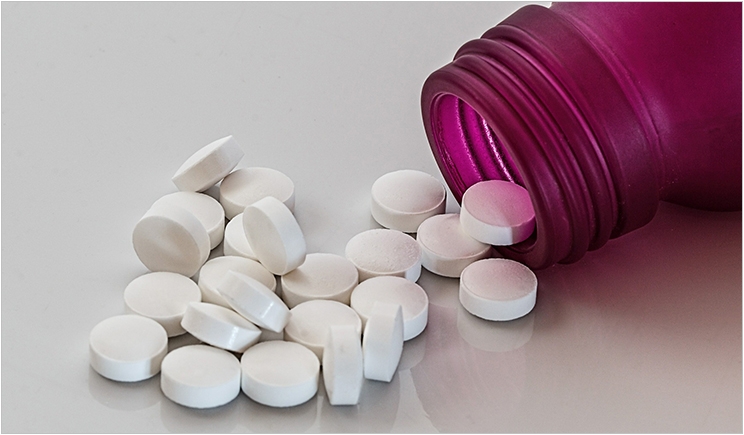
Dental implants are becoming more commonplace in prosthodontic treatment. In fact, the American Academy of Implant Dentistry reports that 3 million people in the United States have dental implants, and that number is growing by 500,000 each year. Also, these implants have a 98% success rate. And since these procedures are surgical in nature, infection is a key concern, prompting many dentists to include antibiotics as part of the treatment.
But antimicrobial resistance also is a potential danger. The Centers for Disease Control and Prevention (CDC) notes that at least 23,000 people in the United States die each year due to bacteria that are resistant to antibiotics. A team of Australian researchers, then, set out to see if there is any consensus for antibiotic prescriptions for healthy patients undergoing implant placement, finding that such usage does not improve clinical outcomes.
In their study, “Is There a Consensus on Antibiotic Usage for Dental Implant Placement in Healthy Patients?” published by the Australian Dental Journal, these researchers concluded that implant practitioners should apply principles of antimicrobial stewardship and not use antibiotics as a routine measure in healthy patients. Alex (Joon Soo) Park, BPharm, one of the researchers and a student at the University of Western Australia School of Dentistry, recently shared their insights with Dentistry Today.
Q: Generally speaking, what are the risks of antibiotics overuse?
A: The risk of antibiotic overuse not only results in compromised health, it also could result in financial burden. A review published by Ventola summarized that overzealous usage has reached the antibiotic resistance era.1 As a result of this, healthcare providers are required to use second-line treatment, which may be questionable in terms of efficacy, is more costly, and may come with greater adverse reactions. Furthermore, the longer time period it takes to treat the infection will consequently lead to unnecessary hospital admission, which is cost-economically inefficient. Nevertheless, more than 70% of dentists on a global scale are likely to prescribe routine antibiotics during implant placement on a routine base approach.
Q: What are the key infection risks in implant surgery?
A: Dental practitioners are mostly concerned with the possible infiltration of oral microbiota into the bloodstream via the surgical site, which could potentially result in bacteremia. This requires hospital admission under intensive care.2
Q: Are there alternatives to antibiotics in addressing these risks?
A: The most important measure to limit these risks would be to adhere to meticulous infection control guidelines, as set out by the dental practitioners’ associations in their respective countries. The clinician’s experience may strongly influence the outcome of implant treatment, and utilizing antibiotics seems to be a form of reassurance for many clinicians.3 However, risks could also be avoided by effectively communicating with patients to ensure the optimum maintenance of implants by practicing good oral hygiene.4
Q: How do dentists distinguish between “healthy” and “unhealthy” patients before deciding whether antibiotics are necessary?
A: Dental practitioners play an important role in determining whether patients are medically compromised prior to any treatment.5 In addition to extensive oral examinations, having a comprehensive medical (and social) history is imperative to ensure the success of invasive procedures such as placing implants. Patients that are considered to be “unhealthy” predominantly have health problems of a systemic nature, and they normally disclose that before the consultations. Smoking, diabetic (especially uncontrolled), and immunocompromised patients are considered to be categorically predisposed to developing infection as a result of delayed healing.
Q: What are the best practices for using antibiotics for these “unhealthy” patients?
A: Adhering to proper antimicrobial stewardship is essential to ensure minimization of antibiotic resistance.6 As dental practitioners, it is important to determine whether antibiotics are absolutely necessary. Signs of systemic malaise are a good indicator to utilize antibiotics. Narrow spectrum is preferable, but broad spectrum is an alternative for dental practitioners who are not sure about the microbiological nature. If it is necessary, utilizing the smallest effective dose for the shortest effective duration is the key. Antibiotics should not be used for other microbial infections such as fungal, protozoan, or even viruses. Both the prescriber and the dispenser should be educating patients to take antibiotics for the entire duration that they have been prescribed for regardless of whether infection has subsided or not.
Q: Where can dentists go for more information about proper antibiotic usage?
A: The CDC provides online resources for the quality use of antibiotics. Patients who want information about prescriptions also can find it online. Furthermore, dental practitioners should utilize the evidence-based guidelines set out by their dental association in their respective countries, as guidelines may vary in different countries.
References
- Ventola CL. The Antibiotic Resistance Crisis: Part 1: Causes and Threats. P&T. 2015;40(4):277-283.
- Piñeiro A, Tomás I, Blanco J, et al. Bacteraemia following dental implants’ placement. Clin Oral Impl Res. 2010;21:913-918.
- Nolan R, Kemmoona M, Polyzois I, et al. The influence of prophylactic antibiotic administration onost-operative morbidity in dental implant surgery. A prospective double blind randomized controlled clinical trial. Clin Oral Implants Res. 2014;25(2):252-259.
- Klinge B , Meyle J. EAO Consensus Report: Peri-implant tissue destruction. The Third EAO Consensus Conference. Clin Oral Impl Res. 2012;23:(suppl.6):108-110.
- Manor Y, Simon R, Haim D, et al. Dental implants in medically complex patients—a retrospective study. Clin Oral Invest. 2017;21:701.
- Using medication: Using antibiotics correctly and avoiding resistance. ncbi.nlm.nih.gov/pubmedhealth/PMH0087079/. Accessed on June 7, 2017.
Related Articles
Antibiotics Called Unnecessary for Dental Patients With Joint Replacements
Dentists Meet Antibiotic Guidelines for High-Risk Cardiac Patients
Antibiotics May Do More Harm Than Good

